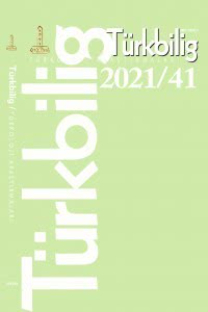REVEALING THE MONGOLIAN SECTIONS OF THE SILK ROAD
Researching the great Eurasian trade routes, commonly known as the Silk Road, is a huge topic for scholars. Firstly, the route extended from Innermost Asia to Western Europe, and secondly, the sections of the trade routes have been changed through the periods of time. Some sections became more important, while others diminished. Many empires, states, and kingdoms ruled parts of the big trading road, but only the steppe empires were able to retain control over the bigger part of it.
The main sections of the Silk Road are well known to researchers, but its branches, such as the northern or Mongolian sections, are only partially known, -- despite the fact that they were used by horsemen peoples from ancient times to the late Middle Ages, who transported important products from the steppes and the Altai Region to present-day China and back. Taking into account the geographical conditions of the area and using the records of the Chinese chronicles, in this paper I will try to identify the main routes of the horsemen people, mainly the Xiongnu (Hun), and I will describe how they approached the marketplaces of the Silk Road. Thanks to the One Belt One Road initiative, these old trade routes seem to have revived, and they play an important role in Mongolian-Chinese regional trade: The Mongols are transporting natural sources - coal and other minerals - to China on the ancient roads.
Anahtar Kelimeler:
Silk Road, Xiongnu, Altai Mountains, Chinese chronicles, Mongolia, trade routes, caravans
REVEALING THE MONGOLIAN SECTIONS OF THE SILK ROAD
Researching the great Eurasian trade routes, commonly known as the Silk Road, is a huge topic for scholars. Firstly, the route extended from Innermost Asia to Western Europe, and secondly, the sections of the trade routes have been changed through the periods of time. Some sections became more important, while others diminished. Many empires, states, and kingdoms ruled parts of the big trading road, but only the steppe empires were able to retain control over the bigger part of it.
The main sections of the Silk Road are well known to researchers, but its branches, such as the northern or Mongolian sections, are only partially known, -- despite the fact that they were used by horsemen peoples from ancient times to the late Middle Ages, who transported important products from the steppes and the Altai Region to present-day China and back. Taking into account the geographical conditions of the area and using the records of the Chinese chronicles, in this paper I will try to identify the main routes of the horsemen people, mainly the Xiongnu (Hun), and I will describe how they approached the marketplaces of the Silk Road. Thanks to the One Belt One Road initiative, these old trade routes seem to have revived, and they play an important role in Mongolian-Chinese regional trade: The Mongols are transporting natural sources - coal and other minerals - to China on the ancient roads.
Keywords:
Silk Road, Xiongnu, Altai Mountains, Chinese chronicles, Mongolia, trade routes, caravans,
___
- Amartuvshin, C., Turbat, T., Odbaatar, T. and Davaatseren, B. (2021). Encyclopedia of Mongolian Archaeology. Ulaanbaatar: Association of Mongolian Archaeologists.
- Batjargal B. (2016). Fan Ye Hou Han shu. Ulaanbaatar: Sergelen International Expedition.
- Christian, D. (1998). A History of Russia, Central Asia and Mongolia. Vol. I. Inner Eurasia from Prehistory to the Mongol empire. Massachusetts: Blackwell.
- Crespigny, R. D. (2006). Some Notes On The Western Regions In Later Han. Journal of Asian History, 40(1), 1-30.
- Csornai, K. (2007). Négy égtájon barbár csillag ragyog. Az ázsiai hunok a kínai forrásokban. Budapest: László Gyula Egyesület.
- Erdenebaatar, D. (2021). Ono ertniy tuukh soyolin olgiy. Umnugovi nutag. Ulaanbaatar: Munkhni useg.
- Hill, J. E. (2003). The Western Regions according to the Hou Hanshu. Chapter on the Western Regions from Hou Hanshu 88. Second Edition. Washinghton: Washinghton University.
- Ma, Y. and Sun Y. (1999). The Western Regions Under The Hsiung-Nu And The Han. J. Harmatta (Ed.), History of Civilizations of Central Asia: The development of sedentary and nomadic civilisation. Volume II. From 700 B.C to Ad. 250 in (227-247. pp.). Delhi: Motilal Banarsidass Publishers.
- Obrusanszky, B. (2021). Hunok a Selyemúton. Barót: Tortoma Kiadó
- Psarras, S.-K. (2003). Han and Xiongnu: A reexamination of cultural and political relations I. Monumenta Serica, 51, 55-236.
- Psarras, S.-K. (2004). Han and Xiongnu: A reexamination of cultural and political relations II. Monumenta Serica, 52, 37-93.
- Stein, A. M. (1921). Serindia: Detailed report of explorations in Central Asia and westernmost China, 5 vols. London & Oxford: Clarendon Press.
- Stein, A. M. (1928). Innermost Asia: Detailed report of explorations in Central Asia, Kan-su and Eastern Iran, 5 vols. London: Clarendon Press.
- Watson, B. (1961). Records of the Grand Historian of China. Translated from the Shih-chi of Ssu-ma-Chien, I-II. New York-London.
- ISSN: 1302-6011
- Yayın Aralığı: Yılda 2 Sayı
- Başlangıç: 2000
- Yayıncı: Doç. Dr. Bülent Gül
Sayıdaki Diğer Makaleler
İKİNCİ KARABAĞ SAVAŞINDA ERMENİ PROPAGANDASI VE MEDYA
ÇUVAŞLAR VE EMİR TİMUR: FOLKLOR, EDEBİYAT VE KİMLİK
BUDİST UYGUR METİNLERİNDE men / mensiz KAVRAMLARI ÜZERİNE
ORTA ASYA TEFSİRİNİN SÖZ VARLIĞINDA SORUNLU BAZI KELİMELER ÜZERİNE NOTLAR
ÖZGÜR BALPINAR’IN ESERLERİNE EKOELEŞTİREL BİR YAKLAŞIM
SOME NOTES ON THE TERMS öŋdi AND töŋdi IN THE KUTADGU BILIG
AZERBAYCAN TÜRKÇESİNDE HAYVAN YAVRU ADLARI
KIRIM TATAR TÜRKÇESİNDE KADINI İFADE EDEN SÖZCÜKLERE EKLENEN BİR MORFEM ÜZERİNE
